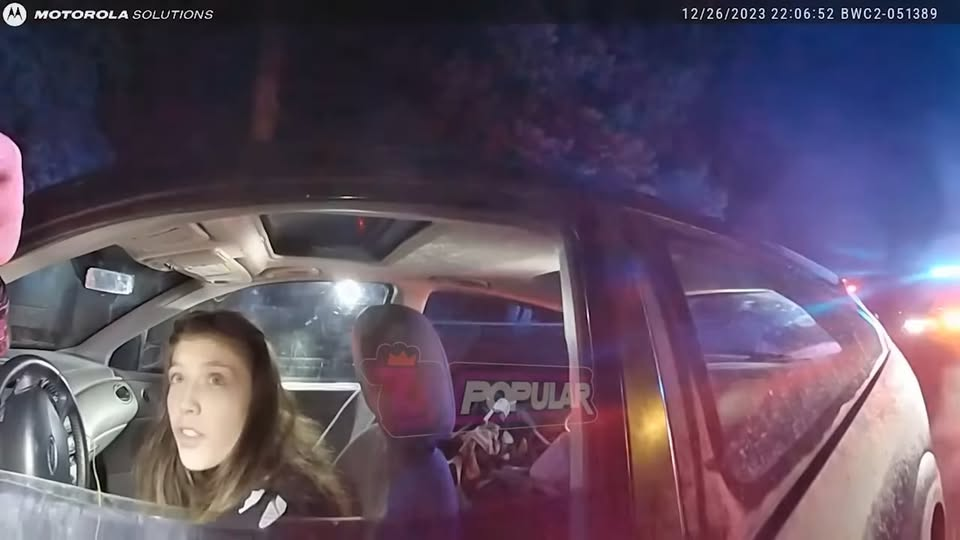BYD Unleashes the Future: Sealion 5 and Sealion 8 Set to Electrify the 2025 US SUV Market
The American automotive landscape is undergoing a seismic shift, and as an industry veteran with a decade embedded in the trenches of automotive technology and market analysis, I can tell you that 2025 is poised to be a pivotal year. While Tesla and the traditional giants have dominated headlines, a formidable new challenger, BYD – Build Your Dreams – is making calculated moves to reshape consumer expectations, particularly in the rapidly expanding Plug-in Hybrid Electric Vehicle (PHEV) SUV segment. With the impending arrival of the BYD Sealion 5 and the flagship Sealion 8, the US market is about to witness a disruption that could redefine value, technology, and performance for the modern family SUV.
BYD is no stranger to global success; they are a vertically integrated powerhouse, leading the world in new energy vehicle (NEV) sales, battery technology, and electric bus manufacturing. Their strategic entry into the fiercely competitive US passenger vehicle market, spearheaded by these two meticulously engineered PHEV SUVs, signals a clear intent: to offer compelling, technologically advanced alternatives that address the evolving demands of American drivers. This isn’t just another foreign automaker dipping its toes in; this is a calculated, strategic assault on the established order, designed to capture significant market share by delivering vehicles that prioritize efficiency, practicality, and cutting-edge innovation.
BYD’s Strategic Imperative: Seizing the American PHEV Opportunity
For years, the US market has been cautiously optimistic about electric vehicles. While full EVs offer zero tailpipe emissions, range anxiety, charging infrastructure gaps, and higher upfront costs remain significant hurdles for many mainstream consumers. This is precisely where PHEVs shine, offering the best of both worlds: substantial electric-only range for daily commutes coupled with the reliability of a gasoline engine for longer journeys. It’s a pragmatic bridge technology that provides immediate benefits without the psychological leap required for a pure EV.
BYD understands this nuance perfectly. Their DM-i (Dual Mode intelligence) hybrid system, combined with their proprietary Blade Battery technology, is not merely an incremental improvement; it’s a foundational shift in hybrid powertrain design, emphasizing ultra-low fuel consumption, smooth power delivery, and exceptional electric range. In a market where consumers are increasingly scrutinizing total cost of ownership, fuel efficiency, and sustainable vehicle technology, BYD’s offerings are strategically positioned to attract a wide demographic, from environmentally conscious urban dwellers to suburban families seeking practical long-range solutions.
The Sealion 5 and Sealion 8 represent more than just new models; they embody BYD’s global electrification strategy tailored for the discerning American buyer. Their success will hinge not only on competitive pricing and robust features but also on how effectively BYD can build trust and brand recognition against deeply entrenched incumbents like Toyota, Honda, Hyundai, and Ford. However, given BYD’s track record in other competitive markets, underestimating their potential would be a significant oversight. This is an automotive investment trend that savvy consumers and industry watchers alike need to pay close attention to.
The BYD Sealion 5: A New Benchmark for the Mid-Size PHEV SUV
Entering the crowded mid-size SUV segment, the BYD Sealion 5 is poised to challenge stalwarts like the Toyota RAV4 Prime, Ford Escape PHEV, Kia Sportage PHEV, and Hyundai Tucson PHEV. What sets the Sealion 5 apart is its positioning as an “extended mid-size” vehicle, boasting dimensions that promise more interior space and comfort than many of its direct competitors. With international specifications hinting at a length around 4710mm and a generous 2712mm wheelbase, it’s designed to offer superior passenger room and cargo capacity without feeling unwieldy on American roads.
The Sealion 5 is expected to embody BYD’s philosophy of delivering exceptional value without compromising on quality or features. Pricing, while speculative for the US market, will likely aim to be fiercely competitive, possibly undercutting some rivals while offering a more comprehensive standard feature set. This means buyers can anticipate a sophisticated cabin brimming with high-tech SUV features, including a large, rotating infotainment screen, advanced driver assistance systems (ADAS), and premium materials that belie its price point.
Under the hood, the Sealion 5 will utilize BYD’s advanced DM-i hybrid system, integrating a highly efficient 1.5-liter gasoline engine (likely naturally aspirated or turbocharged depending on trim) with powerful electric motors and a substantial Blade Battery. This configuration is expected to deliver impressive all-electric range – potentially exceeding 50 miles on a single charge – making daily commutes entirely electric for most users. When the battery depletes, the system seamlessly transitions to a highly efficient hybrid mode, boasting combined fuel economy figures that could challenge segment leaders. The focus here is on seamless performance, ensuring that whether you’re driving on electric power or hybrid mode, the experience is smooth, quiet, and responsive. This long-range hybrid SUV promises to redefine what an affordable EV alternative can be.
The Flagship Arrives: BYD Sealion 8 – A New Contender in the Large 7-Seat PHEV SUV Arena
The arrival of the BYD Sealion 8 is arguably an even bolder statement, directly addressing a gaping hole in the US market: a truly competitive, large, seven-passenger PHEV SUV. While options like the Kia Sorento PHEV and Hyundai Santa Fe PHEV exist, the Sealion 8 promises to push the boundaries of size, luxury, and technology in this niche. With overseas dimensions pointing to an imposing 5040mm length and a significant 2950mm wheelbase, the Sealion 8 positions itself against larger, non-PHEV SUVs like the Hyundai Palisade and Kia Telluride, while offering the distinct advantage of plug-in hybrid efficiency.
The Sealion 8 is designed to be BYD’s flagship SUV, blending robust utility with a premium driving and passenger experience. This means an opulent interior with generous third-row seating, high-quality finishes, and an array of comfort and convenience features expected in a luxury hybrid SUV. Think panoramic sunroofs, multi-zone climate control, ventilated and heated seating, and an immersive audio system. The “tech-focused” claims for the Sealion 8 suggest a comprehensive suite of connectivity features, an advanced digital cockpit, and perhaps even vehicle-to-load (V2L) capabilities, allowing the vehicle to power external devices.
Performance in the Sealion 8 will also be powered by the DM-i system, likely with a more potent version of the 1.5-liter engine (potentially turbocharged) and dual electric motors for all-wheel drive capability. This setup is crucial for a large SUV, providing ample power for acceleration, confident towing capability, and robust performance in varying driving conditions. Expect a substantial battery pack, pushing electric range further and contributing to impressive combined horsepower figures. The goal here is not just fuel efficiency but also a refined driving experience, superior ride comfort, and the ability to handle family adventures with ease. This could be the best PHEV SUV 2025 for families seeking space, sustainability, and sophistication.
The Heart of the Beast: BYD’s DM-i Hybrid System and Blade Battery Advantage
At the core of both the Sealion 5 and Sealion 8 is BYD’s unparalleled vertical integration, particularly in battery technology. The DM-i hybrid system isn’t just about combining a gasoline engine and electric motors; it’s about intelligent energy management. Unlike some traditional hybrids that prioritize engine operation, DM-i often allows the electric motors to handle propulsion for a significant portion of the driving cycle, with the gasoline engine primarily acting as a generator or providing assistance only when absolutely necessary (e.g., heavy acceleration or sustained high speeds). This leads to exceptional fuel efficiency, particularly in urban driving, and a remarkably smooth, EV-like driving experience.
Central to this system is the revolutionary Blade Battery. Developed and patented by BYD, this lithium iron phosphate (LFP) battery pack eschews traditional modular designs for long, thin “blades” that are arranged directly into the battery pack. This innovative cell-to-pack technology offers several critical advantages:
Safety: LFP chemistry is inherently more thermally stable than nickel-manganese-cobalt (NMC) batteries, significantly reducing the risk of thermal runaway and fire. The Blade Battery has undergone rigorous penetration tests without incident, making it one of the safest batteries on the market.
Energy Density (Volumetric): By eliminating bulky modules, the Blade Battery achieves higher volumetric energy density, allowing for larger capacities within a smaller footprint. This translates to more electric range without compromising interior space.
Longevity: LFP batteries typically have a longer cycle life, meaning they can be charged and discharged more times before significant degradation, enhancing the vehicle’s long-term value and potentially reducing concerns about battery longevity hybrid vehicles.
Cost: LFP batteries are generally less expensive to produce, contributing to BYD’s ability to offer competitive pricing without sacrificing profit margins, a key factor in making sustainable transportation more accessible.
These technological pillars provide BYD a significant competitive edge, allowing them to deliver superior performance, safety, and efficiency while maintaining an attractive price point. They are not merely assembling components; they are crafting vehicles from the ground up with a focus on future mobility solutions.
Market Impact and Future Outlook 2025/2026
The introduction of the BYD Sealion 5 and Sealion 8 in the US market for 2025/2026 will undoubtedly send ripples through the industry. For consumers, it means more choice, increased innovation, and heightened competition, which typically leads to better value across the board. For established automakers, it’s a wake-up call to accelerate their own PHEV development and refine their offerings. BYD’s aggressive market entry is likely to spur further advancements in battery technology advancements and efficiency standards across the sector.
While challenges remain, including establishing a robust dealer network, building brand awareness, and navigating geopolitical complexities, BYD’s unwavering commitment to vehicle electrification strategy and its vertically integrated supply chain put it in a powerful position. The Sealion 5 and Sealion 8 are more than just new SUVs; they are harbingers of a future where advanced technology, environmental responsibility, and accessible pricing converge to create truly compelling automotive choices. The competitive SUV market is about to get a lot more interesting.
Embrace the Future of Driving
The 2025 automotive landscape is dynamic, and the arrival of the BYD Sealion 5 and Sealion 8 promises to inject a potent blend of innovation, efficiency, and value into the heart of the American SUV market. These aren’t just vehicles; they are a statement about the future of transportation. Don’t miss the opportunity to experience the cutting edge of plug-in hybrid technology. Explore our upcoming reviews and detailed analyses of these groundbreaking models and discover how BYD is building the dreams of tomorrow, today. Your next adventure could be powered by a Sealion.



